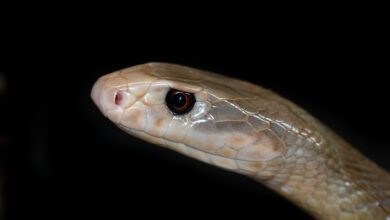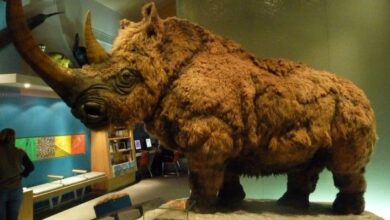Morning mist slowly drifts over the Lamar Valley. It is low and soft, like a whispered secret between the mountains. Bison herds move in the dim light, as their shaggy silhouettes begin to form under the rising sun. Elk bugles echo from canyon walls as bald eagles soar above. Yellowstone is the crown jewel in the American West, a place where nature still retains its wildness. In recent decades, however, something powerful and old has returned to disturb the balance. It’s something with yellow eyes, padded feet and a padded body. The wolves have returned. The Grizzly Cauldron
What about the Grizzlies, then? They never left.
Grizzly bears (Ursus arctos horrificis ) have dominated this 3,500 square mile wilderness for nearly 100 years. These massive predators, some of which weighed up to 700 lbs, were the undisputed giants of Yellowstone. The grizzlies slithered through the alpine meadows of Yellowstone and subalpine forests. They ripped apart logs to dig up grubs or roots. The grizzly was the only animal in the food chain, and it occupied an exalted position.

Nature, as she always does, had different plans.
Return of the Phantom: The Grizzly Cauldron
The landscape changed in 1995. Grey wolves ( Canis lupus) were reintroduced into Yellowstone National Park in a move that would change the ecology of the area and spark debates throughout the country. In the 1920s, ranchers and settlers drove them out, believing that wolves were pests and threatened livestock. The government supported the trapping, poisoning, and shooting of wolves in the Yellowstone backcountry.
Scientists and ecologists began to realise what was lost in the 1990s. Elk populations grew rapidly without wolves, and overgrazed fragile willows and aspen trees. The loss of vegetation that stabilised rivers caused them to erode faster. The number of songbirds and beavers decreased. Yellowstone was not in balance.
31 wolves from Canada were then released in the park’s remote valleys. The result was one of history’s most successful and dramatic wildlife restoration projects, as well as a rekindling of an old rivalry.
Apex meets Apex
Reintroducing wolves to Yellowstone did more than just balance the elk population or grow willows. The grizzly, Yellowstone’s monarch, was forced to adapt to the new, formidable competitor. In the past, wolves and grizzlies coexisted in North America from the forests of the Pacific Northwest to the windswept plains in Montana. A century of separation has numbed the memory.
The grizzly bears were suddenly confronted by packs of strategic, swift hunters that worked together as a group, something the lone bear was not designed for.
A 600-pound grizzly facing a 100-pound wolf on paper seems to be a mismatch. Wolves don’t fight fairly. They don’t have to. They are powerful because of their numbers, coordination and stamina. When a group surrounds a dead bear, the prize is not always won by the bear.
The grizzly bear is not a pushover. The bear is one of North America’s most feared animals. Its jaws are like carving knives, and its claws are as sharp as a knife. It can be incredibly fierce when pressed. No wolf would dare to challenge it. Most often, however, grizzlies avoid confrontation. They have had to learn to know when to push and when to give up.
Carrion Battle
The main rivalry between wolves, grizzlies and bears is not about new kills or epic battles. It’s all about the leftovers. Yellowstone’s winters can be hard, and food is scarce. With their coordinated hunting techniques, wolves can take down large prey such as elk and bison. The grizzly will often arrive before the elk or bison have finished their meal.
A bear is drawn to the scene by the smell of blood in the air. It lumbers into the area and charges. One swipe of the bear’s paw can disperse a dozen wolves. The pack may bark, circle and snap at the bears’ haunches, but they will often back off and wait until the giant has eaten its fill before retreating.
Each year, this dance of dominance is performed hundreds of times in the forests, valleys and ridgelines of Yellowstone. This method is used by wolves to lose a lot of kills. But sometimes, especially when the bears are young, injured or outnumbered, they can reclaim what was lost.
It’s amazing how quickly the two species have adapted back to each other. Yes, it’s a long-standing rivalry. But, the relationship is also evolving, thanks to necessity, instinct and the unique conditions of the Yellowstone ecosystem.

Landscape of Conflict and Coexistence
You must first understand the landscape that is used to stage this drama.
Yellowstone is not just a park, it’s also a volcanic plateau that straddles the border of Wyoming, Montana and Idaho. Under its surface, the largest supervolcano of North America bubbles. Above ground is a vast landscape of sagebrush, pine, alpine, and geothermal wonders.
In the summer, Grizzlies prefer higher altitudes. They dig up roots and remove berries from remote meadows. In the fall, they move into valleys to find high-calorie food before hibernation. Wolves tend to stay in valleys or river corridors with elk and bison.
These worlds do overlap. In places such as the Lamar Valley, often called “America’s Serengeti”, wolves and bears frequently cross paths. The vast bison herds that feed both species and the open terrain make confrontations inevitable.
Tourists and researchers often capture glimpses of this dance through their cameras and binoculars: a bear running away from a pack of wolves; a group flanking a large grizzly. Both species pause to assess each other, calculating odds.
These moments aren’t about competition, they’re about coevolution.
The Ecosystem ripple effect
Ecologists have called the return of the Wolf–and the interaction between it and the Grizzly– a cascade. Wolfe reduces overgrazing by regulating the prey species, such as elk. In turn, this allows trees and shrubs to grow, which is beneficial for birds, beavers and insects. Rivers stabilise. Biodiversity thrives.
Indirectly, the Grizzlies also benefit. More roots and berries are produced in healthier riparian areas. Beavers increase the fish population by creating wetlands. As wolves leave behind partially-eaten kills, scavenging opportunities increase.
However, wolves are also a source of competition. Grizzly cubs are more likely to die when wolf populations are high. When moving through wolf territories, bears, especially young ones, are at greater risk. Every carcass is a potential battlefield.
The delicate balance between the two species ensures that no one of them will ever be dominant. Balance is not static, but is a struggle for adaptation and resilience.
Human Eyes on Ancient Struggles
Millions of people visit Yellowstone every year to see this live drama. Visitors gather along ridgelines at dawn with spotting telescopes and long lenses to catch a glimpse of the wolves trotting in the mist or a bear rolling logs. They are not ghost stories, nor are they tales from the frontier. Instead, these are living, breathing examples of nature’s ability, despite past mistakes, to bounce back.
Researchers are now tracking individual wolves with GPS collars. They note patterns of interaction, territorial overlap and killing site behaviour. Each piece of information adds another chapter to the unfolding story.
Scientists are not the only ones who gain from this. Indigenous peoples such as the Shoshones, Blackfeet and Crows have always regarded these creatures as spiritual teachers and kin. In stories, songs and ceremonies, the wolf and bear are symbols of wisdom, strength and balance.
This rivalry isn’t just environmental; it is also cultural, symbolic, and deeply human.

The Fierce Has a Future
Climate change is reshaping the landscape. New challenges are emerging. Berry production is affected by drought. Warmer winters disrupt hibernation patterns. Wildfire alters habitat. Human encroachment outside the park brings with it new risks, such as poaching, car accidents, and livestock conflicts.
The wolf and grizzly are still around. They are the survivors of a different era, when sabre-toothed cats roamed the continent, and glaciers carved the valleys. They are ancient rivals, but they have a modern ability to adapt.
Yellowstone is a place where they are creating a new chapter.
Balance, not destruction.
Coexistence is not about dominance but coexistence.
The land has always watched silently in this vast wilderness, beneath the howls of the wolves and grunts of the bears.
Yellowstone isn’t a postcard from the past. It’s alive. It is alive.
In the deepest wilderness, the grizzly bear and the wolf are still engaged in their age-old battle, but not as rivals. They continue to be essential components of a complex, beautiful whole.




